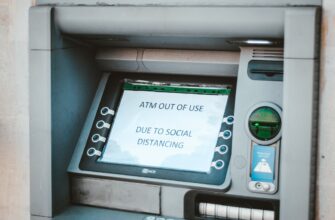In today’s digital landscape, securing sensitive accounts with cold storage encryption is non-negotiable—but it doesn’t require a fortune. This guide reveals budget-friendly methods to encrypt accounts in cold storage, combining ironclad security with practical affordability. Whether safeguarding cryptocurrencies, confidential documents, or personal data, you’ll learn how to create an impenetrable offline vault without draining your resources.
## Why Cold Storage Encryption Matters More Than Ever
Cold storage keeps sensitive data completely offline, eliminating remote hacking risks. However, physical devices can still be lost, stolen, or accessed by unauthorized individuals. Encryption adds a critical layer of protection by scrambling your data into unreadable code. Without the decryption key, even if someone obtains your hardware, your accounts remain secure. This dual approach—offline storage plus encryption—creates a “security fortress” for your most valuable digital assets.
## Top 4 Low-Cost Encryption Methods for Cold Storage
1. **Open-Source Software (Free):** Tools like VeraCrypt and AES Crypt offer military-grade encryption without cost. VeraCrypt’s hidden volume feature allows plausible deniability—perfect for high-risk scenarios.
2. **Hardware Wallet Encryption (Under $100):** Devices like Ledger Nano S or Trezor One encrypt cryptocurrency keys offline. Their secure chips prevent physical tampering, with prices starting at $59.
3. **Encrypted USB Drives ($10-$30):** Kingston and SanDisk offer hardware-encrypted flash drives with PIN protection. No software installation needed—just plug in and set your password.
4. **Paper Wallet Encryption (Free):** Generate encrypted QR codes for crypto keys using offline tools like BitAddress. Print and store in multiple secure locations.
## Step-by-Step: Encrypting Accounts for Cold Storage
Follow this cost-effective workflow:
1. **Select Your Medium:** Choose USB drives, paper, or dedicated hardware wallets based on your budget.
2. **Install Encryption Software:** For software methods, download VeraCrypt/AES Crypt from official sources. Verify checksums to avoid tampered installers.
3. **Encrypt Your Data:**
– In VeraCrypt: Create an encrypted container (AES-256 recommended)
– For hardware wallets: Initialize device and set strong PIN
– For paper: Generate keys offline and encrypt with BIP38
4. **Transfer Accounts Securely:** Move sensitive data to the encrypted medium using an air-gapped computer (disconnected from internet).
5. **Store Physical Media:** Use fireproof safes, safety deposit boxes, or geographically dispersed locations.
6. **Backup Encryption Keys:** Preserve recovery phrases/keys separately using steel plates ($20) or encrypted cloud storage.
## Critical Best Practices for Budget Security
– **Password Protocols:** Use 12+ character passwords with symbols, numbers, and uppercase/lowercase letters. Avoid dictionary words.
– **Multi-Location Backups:** Store encrypted copies in 3+ physical locations to mitigate fire/theft risks.
– **Regular Verification:** Check storage integrity every 6 months by accessing test files.
– **Zero Trust Principle:** Never store decryption keys with encrypted devices. Use mnemonics or split-key systems.
– **Update Strategically:** Refresh encryption every 2-3 years or after major algorithm vulnerabilities emerge.
## FAQ: Cold Storage Encryption on a Budget
**Q: Can I encrypt cold storage for free?**
A: Absolutely. Open-source tools like VeraCrypt provide bank-level encryption at zero cost. Combined with standard USB drives, this is the most budget-friendly approach.
**Q: How secure are $20 encrypted USB drives?**
A: Reputable brands (e.g., Kingston IronKey) use AES 256-bit hardware encryption—identical to enterprise solutions. Avoid unknown brands with questionable security claims.
**Q: Should I encrypt paper wallets?**
A: Yes. Use BIP38 encryption to password-protect printed keys. Store copies in tamper-evident envelopes inside locked containers.
**Q: How often must I rotate encryption keys?**
A: Only when adding new high-value accounts or if a vulnerability is discovered in your encryption standard. Regular password changes aren’t necessary for cold storage.
**Q: Can encrypted cold storage be hacked?**
A: Properly implemented AES-256 encryption would take billions of years to brute-force with current technology. The real vulnerability lies in poor password hygiene or physical access compromises.
Implementing low-cost cold storage encryption transforms vulnerable accounts into virtually unbreakable digital assets. By leveraging open-source tools, affordable hardware, and disciplined security practices, you create a defensive barrier that costs pennies compared to the value it protects. Start today—your future security is worth every mindful investment.








